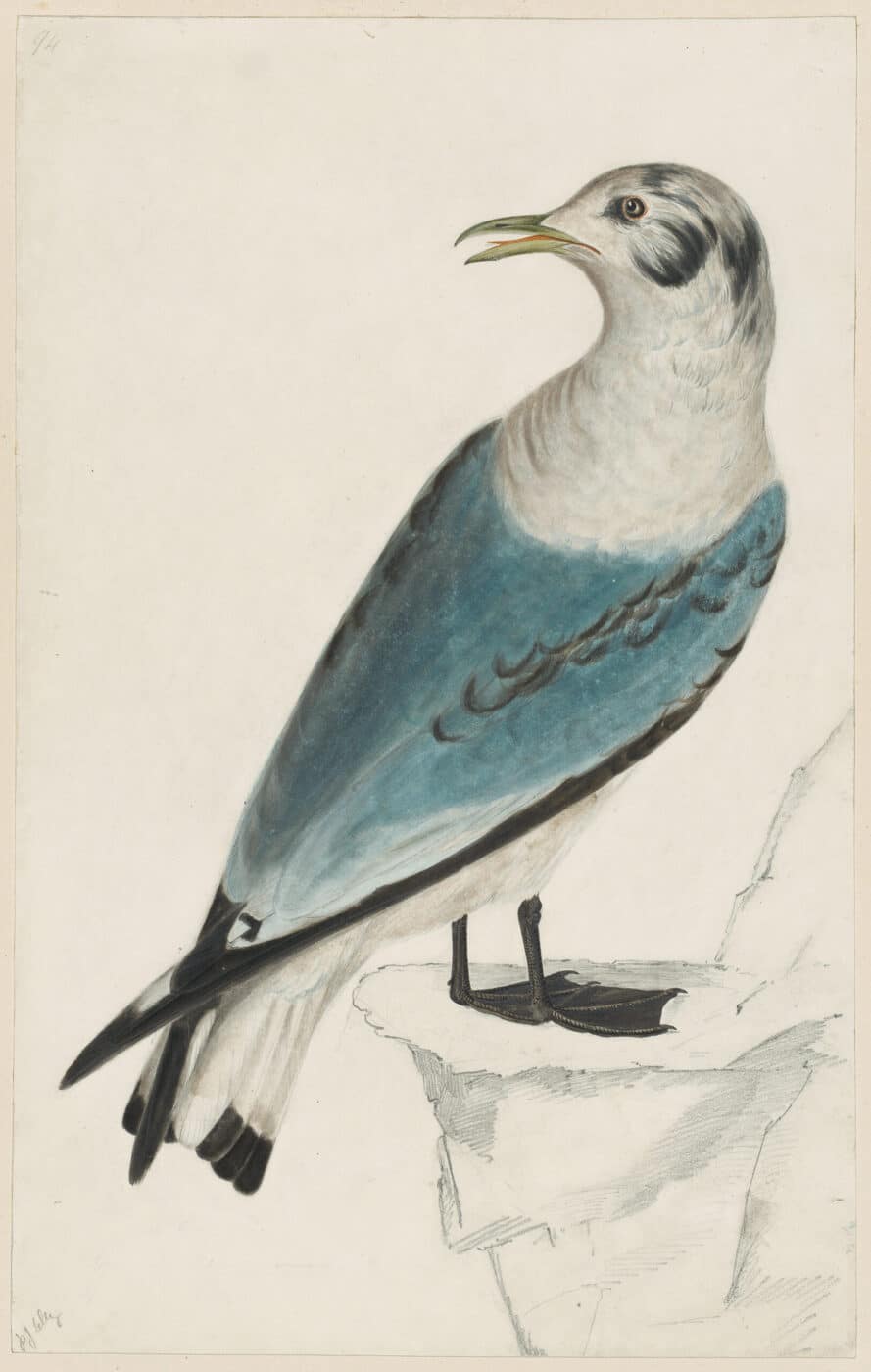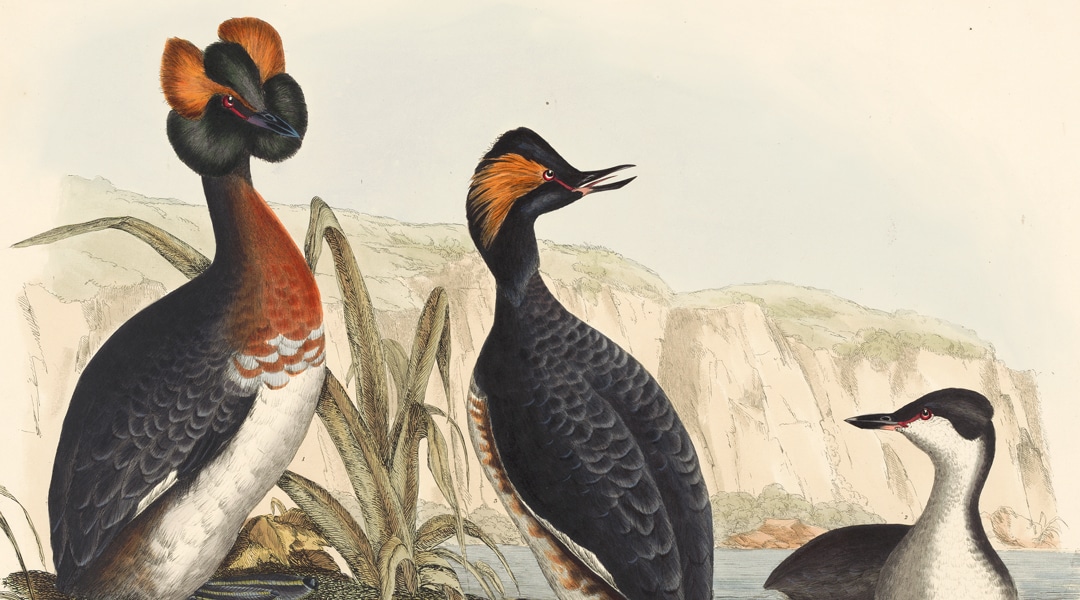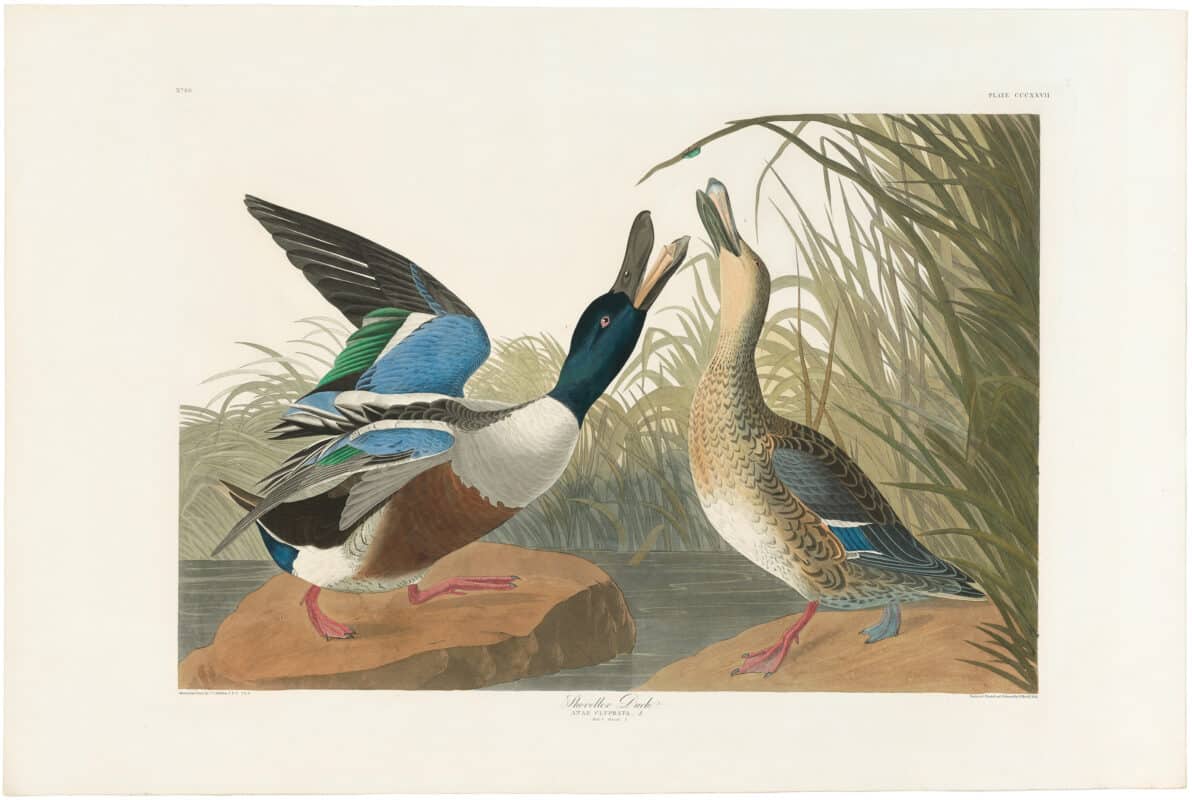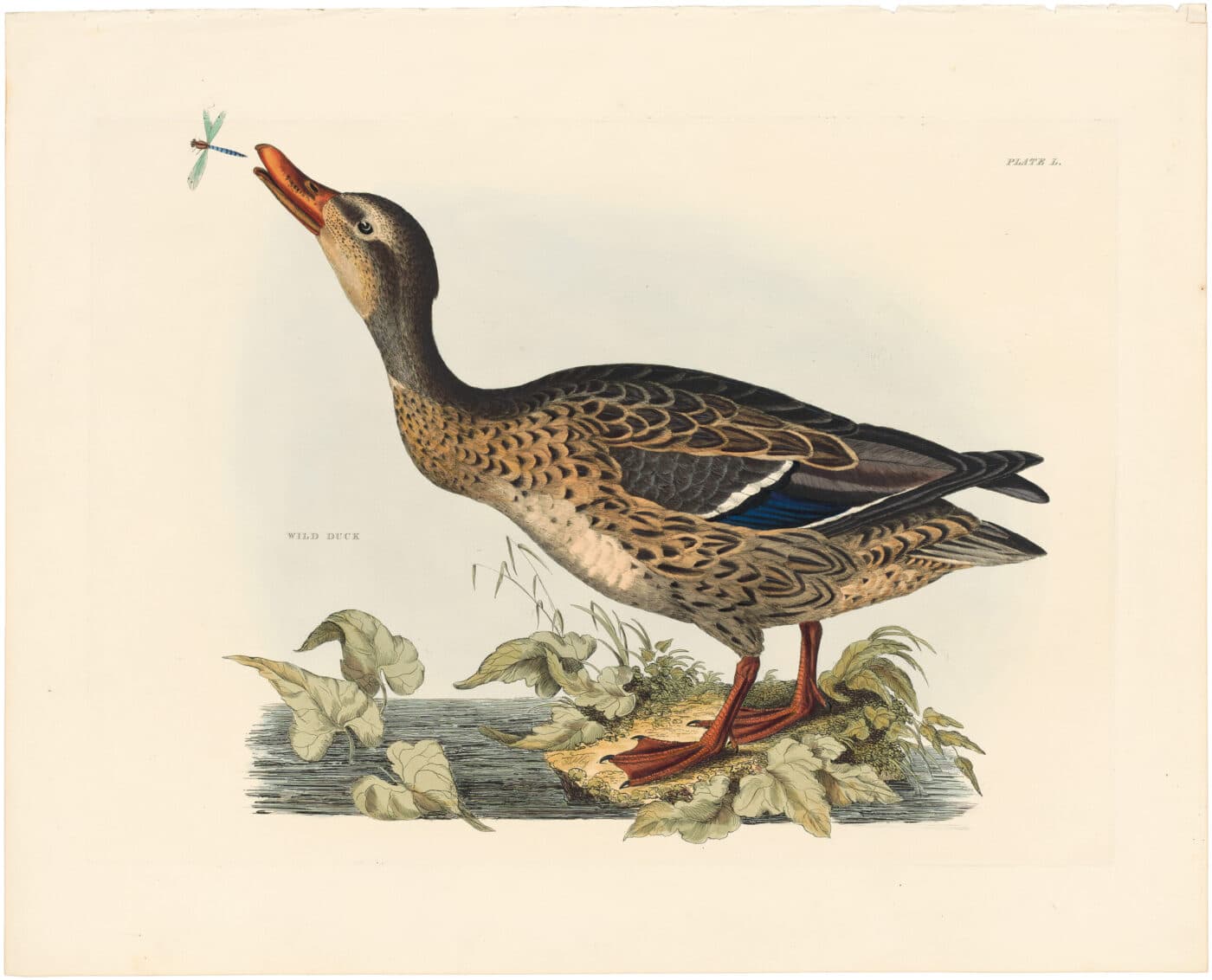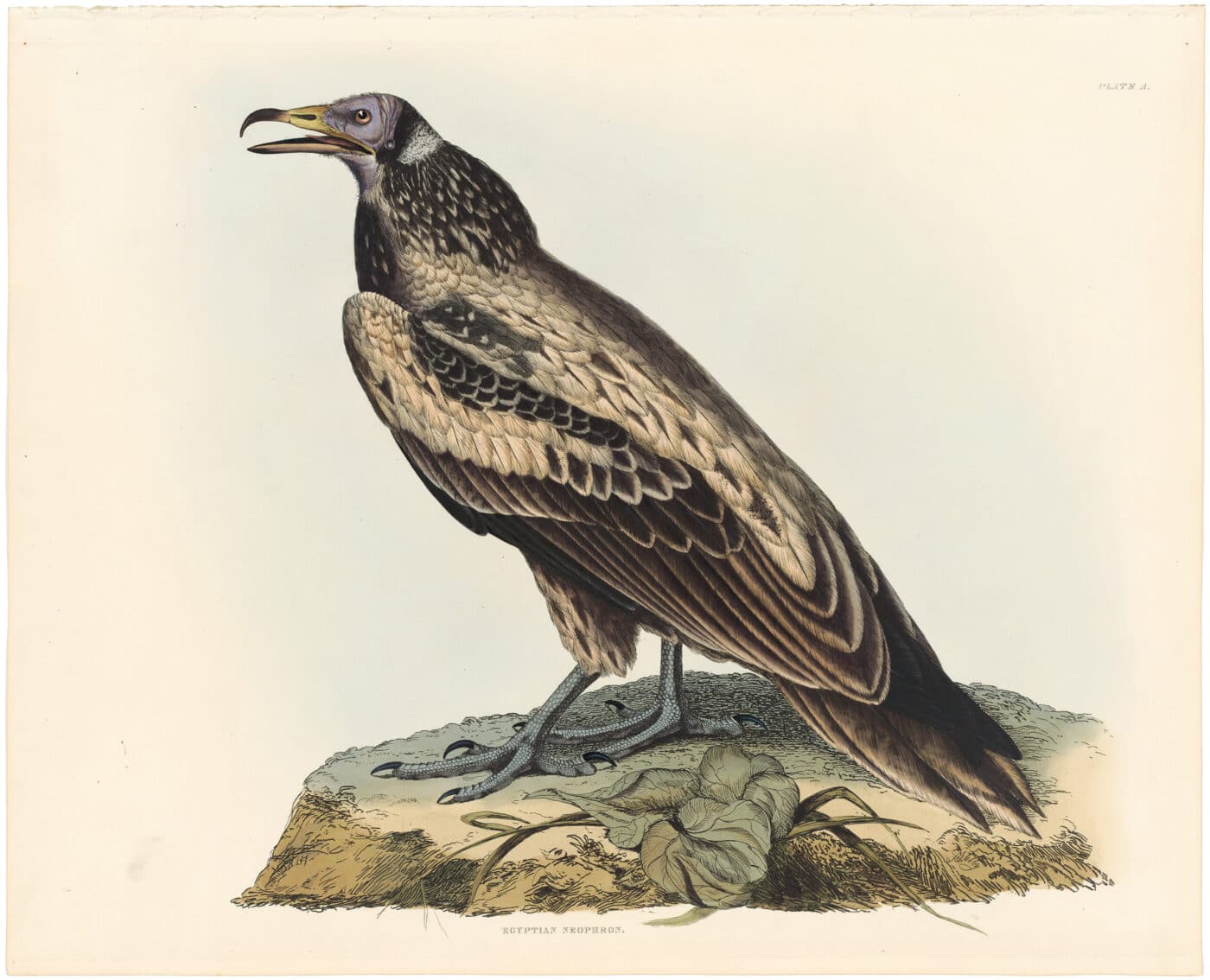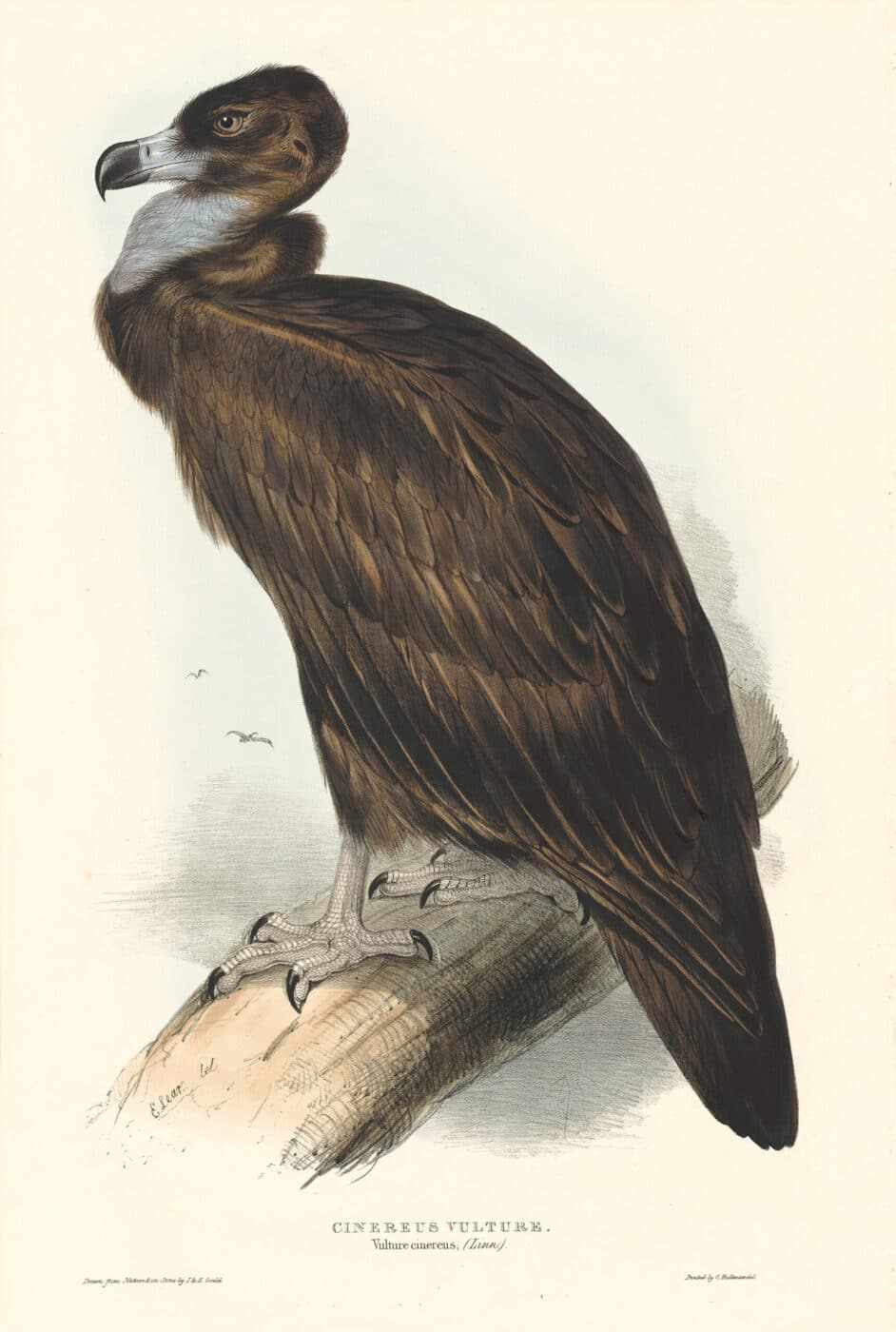Birds and Animal Art
A Comparative Analysis of the Bird Prints of Prideaux John Selby and His Contemporaries
An exploration of the creative confluences and stylistic continuities between the artwork of Selby and that of John James Audubon, Alexander Wilson, and Edward Lear.
Table of contents
Through his social status and geographical location, Selby occupied a prime position at the center of ornithological art during the early to mid nineteenth century. Immersed in an environment that begot artists of similar pursuits, including John James Audubon, Edward Lear, Alexander Wilson, and numerous others, Selby’s artwork reflects many of the stylistic and technical lineaments of his time. In fact, he collaborated with and took painting lessons from several of his contemporaries. Unfortunately, there are negligible written records of Selby’s life and interests. As a result, Selby’s artwork is perhaps best viewed in proximity to that of his contemporaries. This manner of comparative analysis reveals the nuances, trajectories, innovations, and underlying structures that both unite and distinguish the work of the artist-ornithologists of this particular historical climate.
Selby’s Biography
Prideaux John Selby was born into wealth, inheriting an estate and a title that permitted him the luxury of cultivating his naturalist pursuits without distraction. Residing at Twizell house in Northumberland, Selby “led the life of a respected country squire, serving as high sheriff and deputy lieutenant of the country of Northumberland, and often entertaining the leading naturalists and wildlife artists of the day, providing them with a welcome break on their long journeys between Edinburgh, Newcastle or London to attend scientific meetings or visit museums.” (Birds, The Art of Ornithology, Jonathan Elphick, 151) With prime access to a rich natural landscape and a diverse array of wildlife, as well as exposure to the latest artistic and scientific colloquy of the day, Selby began a 14-year-long project to record the birds of Great Britain, aptly titled Illustrations of British Ornithology (1833).
Selby’s project reflects the disciplinary trend of his day in that he chooses to define the parameters of his inquiry through geographical borders. In other words, by focusing his scope of examination on the birds of Great Britain, the structure of Selby’s project runs parallel to that of other artist-ornithologists such as John James Audubon, Alexander Wilson, and John Gould who similarly created folios that focused on the various species found within a single geographical region. This tectonic decision should come as no surprise since Selby was not an isolated artist, but instead mingled with the finest artists and naturalists of his day. This comingling of subject matter, artistic techniques, and publishing strategies can be seen vividly throughout Selby’s work.
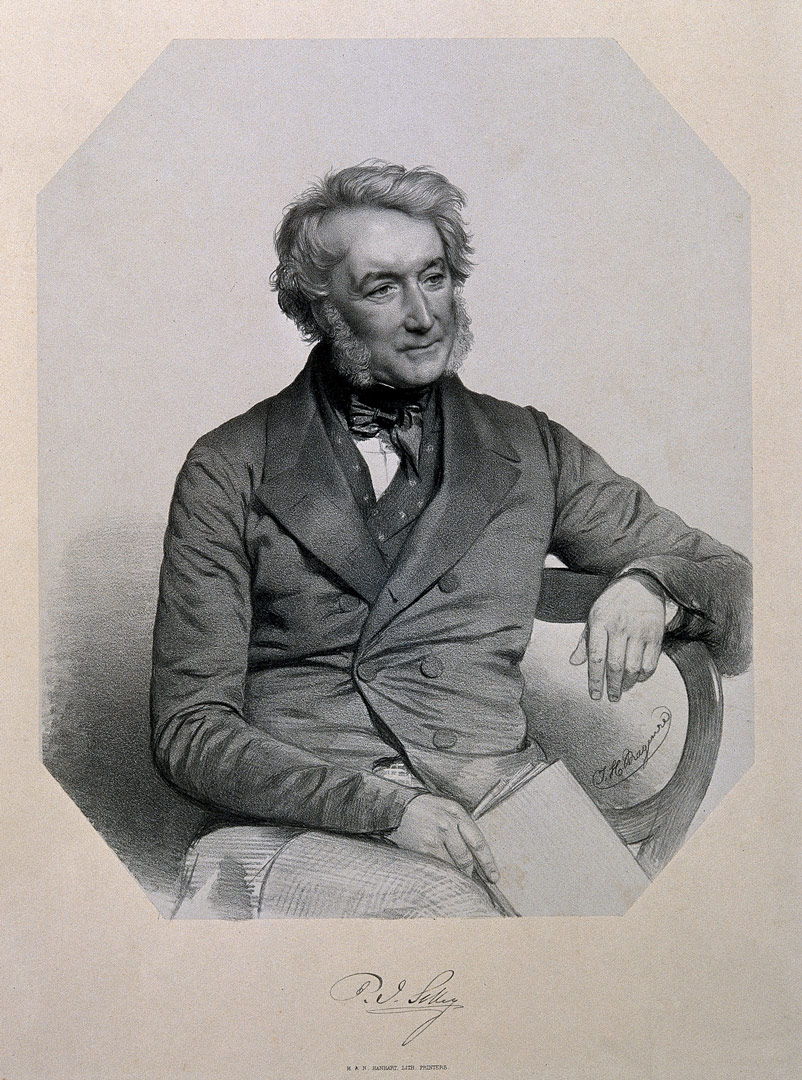
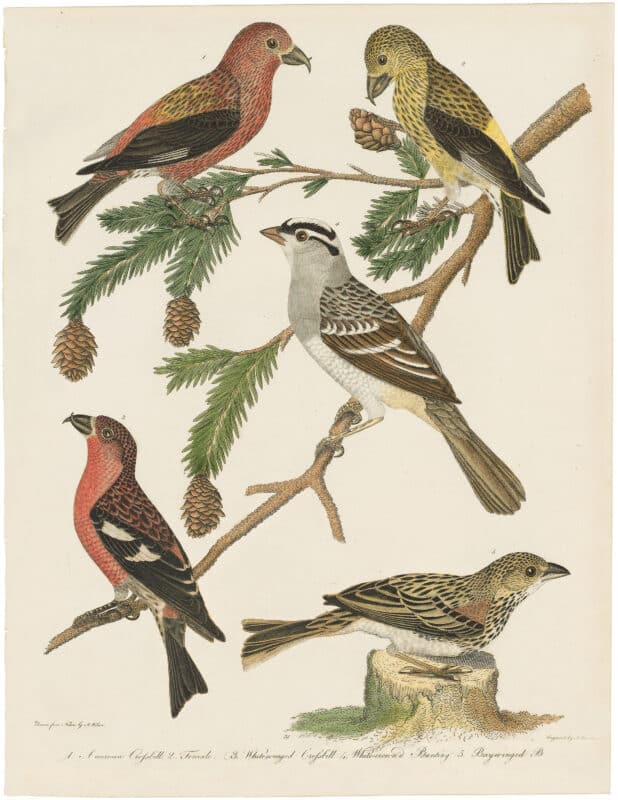
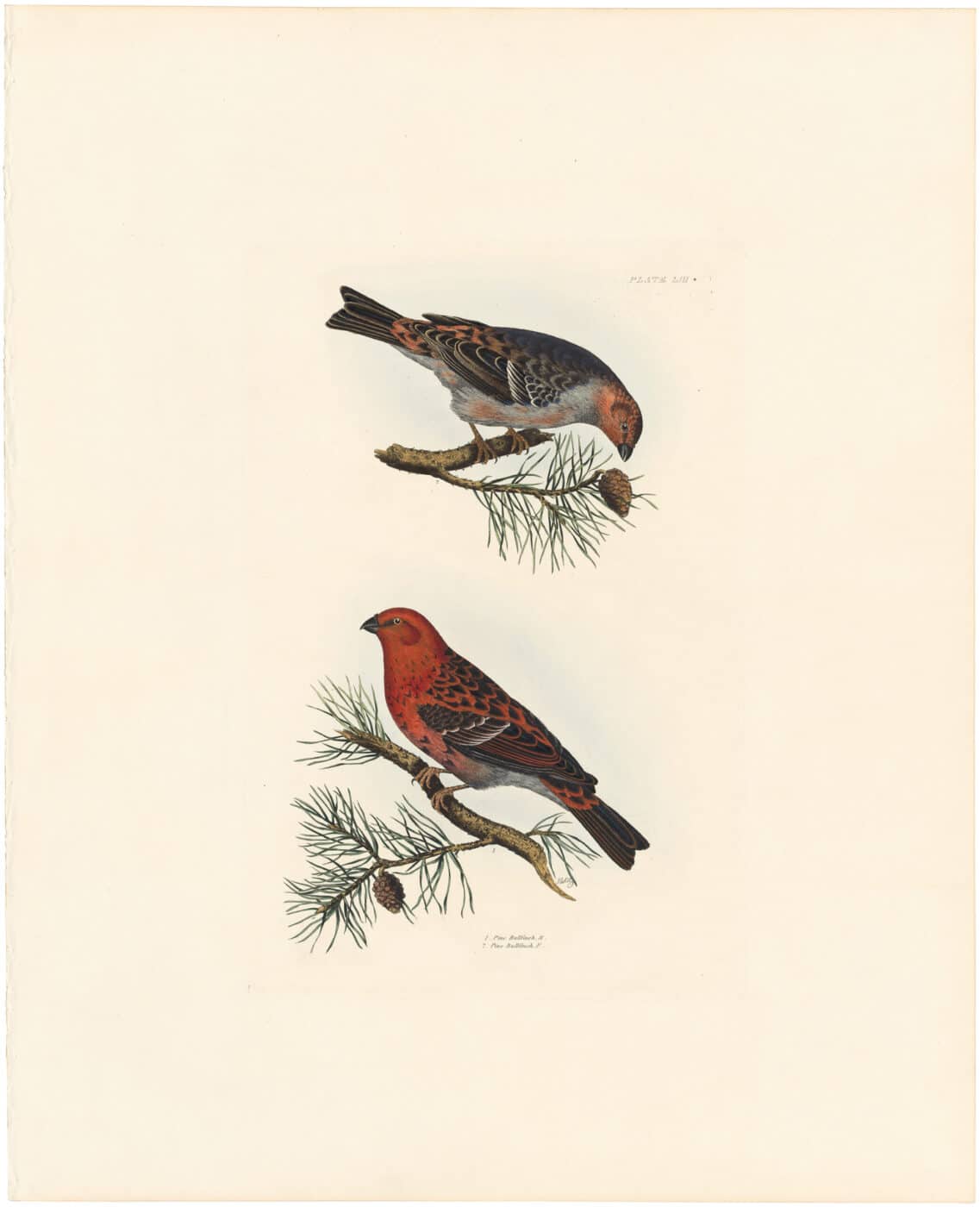
Wilson’s Influence
Take for example Selby’s Vol 1, Pl. 53B, Parrot Grofsbill, Lefser Redpole in relation to Wilson’s 1st Edition, Pl. 31 American Crossbill; White-winged Crossbill; White-crown’d Bunting; Bay-winged B. In both Selby’s etching and Wilson’s engraving, we are presented with an assortment of related birds, perched on fragments of environmental elements, all rendered against a nondescript background. Additionally, at the bottom of each sheet there is a ledger that identifies the species depicted. This means of visually representing like-species on the same sheet is common in representations of smaller birds, who do not necessarily merit the same surface area as a larger species. Moreover, the similarity in organizational structure between the two artists demonstrates the confluence of ideas and creative strategies within the discipline of ornithological-art at this time.
Audubon’s Influence
Likewise, Selby’s artwork demonstrates nodes of confluence with that of Audubon, with whom he frequently interacted, and briefly shared the same printmaker with. Take for instance Selby’s Vol 2, Pl. 50A, Wild Duck, Male and Audubon’s Havell Ed. Pl 327, Shoveller Duck. In this pairing, we can sense that the characteristic dynamism of Audubon’s prints has permeated Selby’s approach to rendering his specimens. In Audubon’s print, the male and female shoveller duck competitively lunge for an emerald green beetle. Likewise in Selby’s print, he has rendered the Wild Duck in hot pursuit of an insect snack. In his book Audubon in Edinburgh: The Scottish Associates of James John Audubon, John Chalmers observed how “After Audubon’s visits [Selby’s] paintings become more animated” (214). This is not difficult to believe since Selby and his colleague Sir William Jardine took part in painting lessons instructed by Audubon. Moreover, Selby’s duck appears grounded in its environment, which receives more attention than that of his previously discussed print, the Parrot Grosbill. Lastly, both artists render the birds in true-to-life scale, which was an innovative approach to bird illustration at this time. It is interesting to note that both Selby and Audubon used the same type of Whatman paper for their prints, and thus their respective works bear the same watermark.
Lear’s Influence
Lastly, a comparison between Selby’s work and that of Edward Lear reveals several interesting congruences and variations. Take for instance Selby’s Vol. 1, Pl. A, Egyptian Neophron, viewed in relation to Lear’s Pl. 2, Cinereous Vulture from John Gould’s Birds of Europe. Overall the two prints avow a similar treatment of space and subject. A singular bird, surrounded by a soft ambient blue, and grounded on a minimally rendered environmental element. Beneath the Neophron a scrap of landscape is articulated, but just enough to ground the bird and to give it a sense of scale and presence. Likewise, Lear’s treatment of space in the Cinereous Vulture echoes that of Selby’s print – a fragmentary tree branch supports the vulture but does not connect it to a broader ecosystem. Despite the similarities, Selby and Lear’s work is actually incredibly different in that they use different printmaking processes. Selby’s print is an etching, which is a printmaking process that lends itself to precision, decisive linearity, and intricate detailing. By contrast, Lear’s print was rendered through lithography, which is a printmaking process that tends to evoke the soft feathering linework and ranging tonality of an artist’s graphite or charcoal sketch.
Selby’s Illustration of British Ornithology, produced collaboratively with his colleague Sir William Jardine and with the help of his brother-in-law Admiral Robert Mitford, was published in two volumes between 1821 to 1834. Composed of 222 plates that were issued in 19 parts, the final product was 14 years in the making. While Selby etched his own plates, he did employ W. H. Lizars for the printing and coloring portion of the process. This approach is unique for this time since many artists bestowed the entire printing process on the printmaker, and did not etch the plates or stones themselves. Selby sourced the majority of his specimens by himself, and, when possible, sketched from life. He would then develop and detail his sketches through the application of watercolor, a technique that he refined under the tutelage of Audubon. This kittiwake is an example of one of Selby’s preliminary watercolors that his prints were then rendered from.
As a whole, Selby’s work is exemplary of several distinctive aesthetic and structural approaches used by artist-ornithologists in the early to mid nineteenth century. A medley of compositional techniques and creative approaches can be found throughout his Illustrations, and present him as a speculum for trends within the discipline. In this way, his work has a mirror-like quality in that it reflects the trends among artist-ornithologists of his day without espousing too strongly one or the other.
